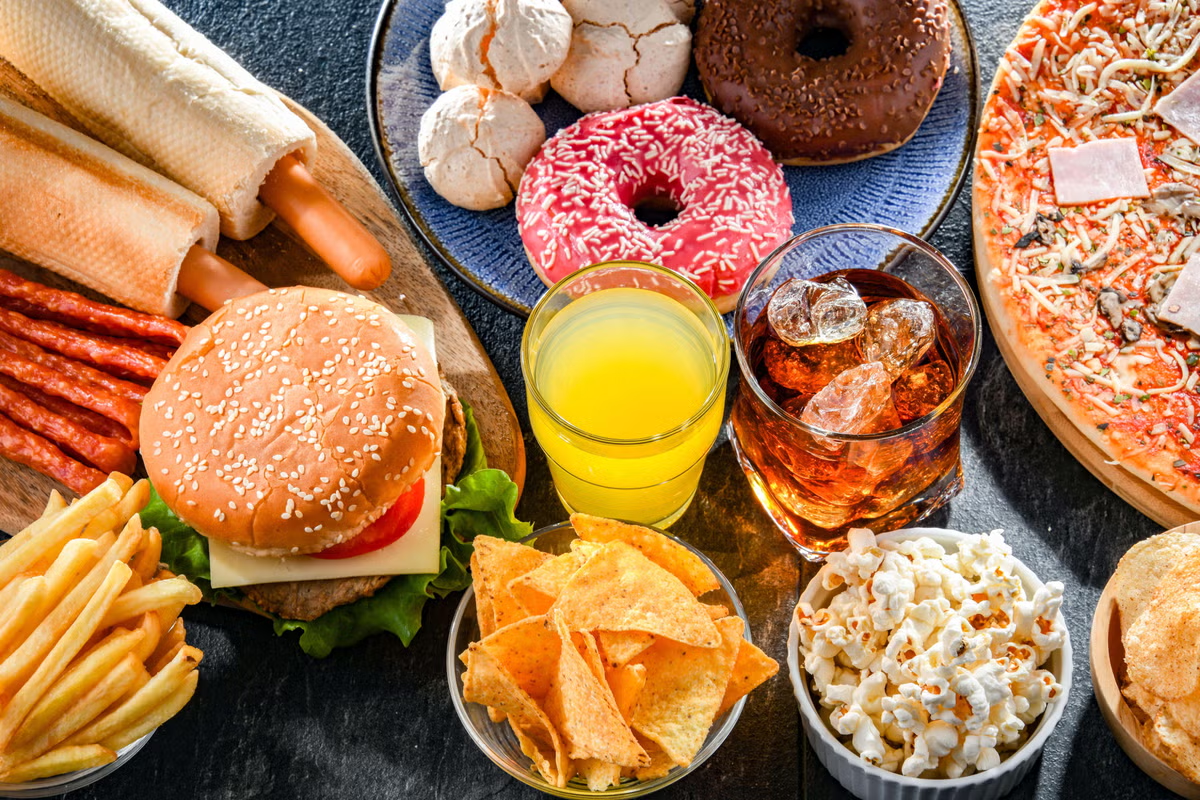The one thing that could halve your ultra-processed food consumption in a week

Stay ahead of the curve with our weekly guide to the latest trends, fashion, relationships and more
Stay ahead of the curve with our weekly guide to the latest trends, fashion, relationships and more
Stay ahead of the curve with our weekly guide to the latest trends, fashion, relationships and more
In Britain, we love snacks. Pastries with our coffee, biscuits with our tea, a packet of crisps before lunch, and a 3pm sweet treat to tide us through to dinner are just a handful of the between-meal moments that have formed a regular part of our common dietary schedule.
On average, we snack 2.3 times per day, every day. In fact, the UK snack market has blown to such an extent that it was valued at more than £3bn in 2024, with chocolate-covered biscuits or cookies singled out as Britain’s bestseller.
It brings me absolutely no joy to tell you this, but this habit is killing us quicker. Ultra-processed foods (UPFs) such as biscuits, sweets, chocolate, crisps, ice cream, cakes and pastries have been linked to harm in every major organ system of the human body, according to the world’s largest review published this week in The Lancet.
They’re associated with an increased risk of numerous health conditions, including obesity, heart disease, type 2 diabetes and depression – and make up a huge 56 per cent of Britain’s shopping basket, which is higher than most other European countries, including Italy, Cyprus, Greece and Portugal.
While eating between meals can help regulate blood sugar and prevent overeating during breakfast, lunch and dinner, the problem is, many UPFs are engineered for hyper-palatability, which leaves us wanting more and more, causing us to overeat.
“You go into a high street or a corner shop and trying to get a healthy snack is near impossible,” says Sarah Berry, professor in the Department of Nutritional Sciences at King’s College London and chief scientist at ZOE. “Given that snacking accounts for nearly 25 per cent of our energy intake, I do believe it’s the simplest strategy to improve our health if we switch from unhealthy, heavily processed snacks to healthy snacks.”
She explains: “What we know is, on average, we get between 50 per cent and 60 per cent of our calories from multi-processed food in the UK. We also know that in the UK, we get on average around 20 to 25 per cent of our calories from snacks. So, it’s simple maths. If every snack was 100 per cent UPF, then yes, you could cut your UPF intake by nearly 50 per cent. And most of the data shows that the majority of snacks for a high proportion of people come from what would be considered ultra-processed foods.”
Thanks to the whirlwind of modern life, nutrient-dense home-cooked meals have been increasingly replaced by quick fixes and food on the move. Snacking can happen mindlessly, while scrolling, driving, or in front of the TV, provoked by stress, boredom or habit. But it can also happen in a rush, on our commutes home or late at night. Outside of our intended eating windows, when our metabolism is off duty, our insulin sensitivity has dropped and our bodies are burning fewer calories.
Research by The Royal Society for Public Health (RSPH) found in 2016 that the average UK commuter consumes nearly 800 additional calories a week while travelling to and from work, often as a result of unhealthy snacking. This is on top of many adults in the UK already consuming between 200 and 300 extra calories a day above the recommended daily guidelines, according to additional research by BMC Public Health.
“Many of these excess calories can come from snacking occasions,” the study concluded. “We live lifestyles that are very different to 50 years ago,” explains Berry. “We’re more sedentary. We have two working parents in most households. We don’t have the time that we had before to shop, prepare meals, and so forth. But our bodies haven’t evolved to handle this current food landscape and this change in lifestyle. The food landscape has changed more quickly than we’ve evolved.”
Healthier snack alternatives to crisps and chocolate include whole foods like nuts, seeds, fruit or whole grain crackers with seeds. “Unfortunately, heavily processed, unhealthy snacks are often cheaper,” Berry acknowledges. “They’re more accessible and great for people on the go. So, the answer is to provide more accessible, affordable, healthy snacks for people on the move. Whose responsibility is that?”
Some would say the multi-billion-dollar food industry is responsible, others might suggest the government, while many would posit that responsibility starts in our own households. And, while eliminating 56 per cent of your weekly shop sounds like a horrendously stressful task to take on, Berry says we only actually need to focus on the 20 per cent that contains “high risk” heavily processed foods.
Wholegrain bread and muesli are technically UPFs, but they aren’t ones you necessarily need to eliminate from your diet, as they could have other nutritional values. Then there are the snacks that are being actively marketed as a healthy choice, but on closer inspection are not at all. This was the subject of a recent Channel 4 documentary, Joe Wicks: Licensed to Kill, which highlighted most protein bars’ status as an ultra-processed food – a categorisation identifiable by their largely unrecognisable ingredient lists. Off the back of this, Joe Wicks and featured expert Professor Chris van Tulleken called for mandatory warning labels on harmful food based on existing government guidance.
It’s a minefield. But, more simply, when you consider that 20 per cent of foods that are processed in a way that’s harmful for our health, and Berry notes a “large proportion” of these come from snacks, eating on the go is a sound place to start if you really want to cut down on UPFs from your diet. And when it comes to snacking, experts advise that we should think about getting protein and fibre for the healthiest outcomes – think apple and cheese, berries and yoghurt, carrots and hummus, or nuts and dried fruit.
One study conducted by Berry compared participants who got 20 per cent of their energy from “typical UK snacks” and another group who got the same amount of their calorie intake from almonds. Over the course of six weeks, they monitored blood vessel function, blood lipids and liver fat. “The improvement that we saw in all of these health measures in those snacking on nuts was huge,” she says. “It accounted for a predicted 30 per cent reduction in cardiovascular disease. And that’s massive.”
So, while UPF panic is seizing supermarket shoppers with every new study that emerges, it might be best to simply start with what’s bite-sized in your basket and rethink what you’re snacking on.





